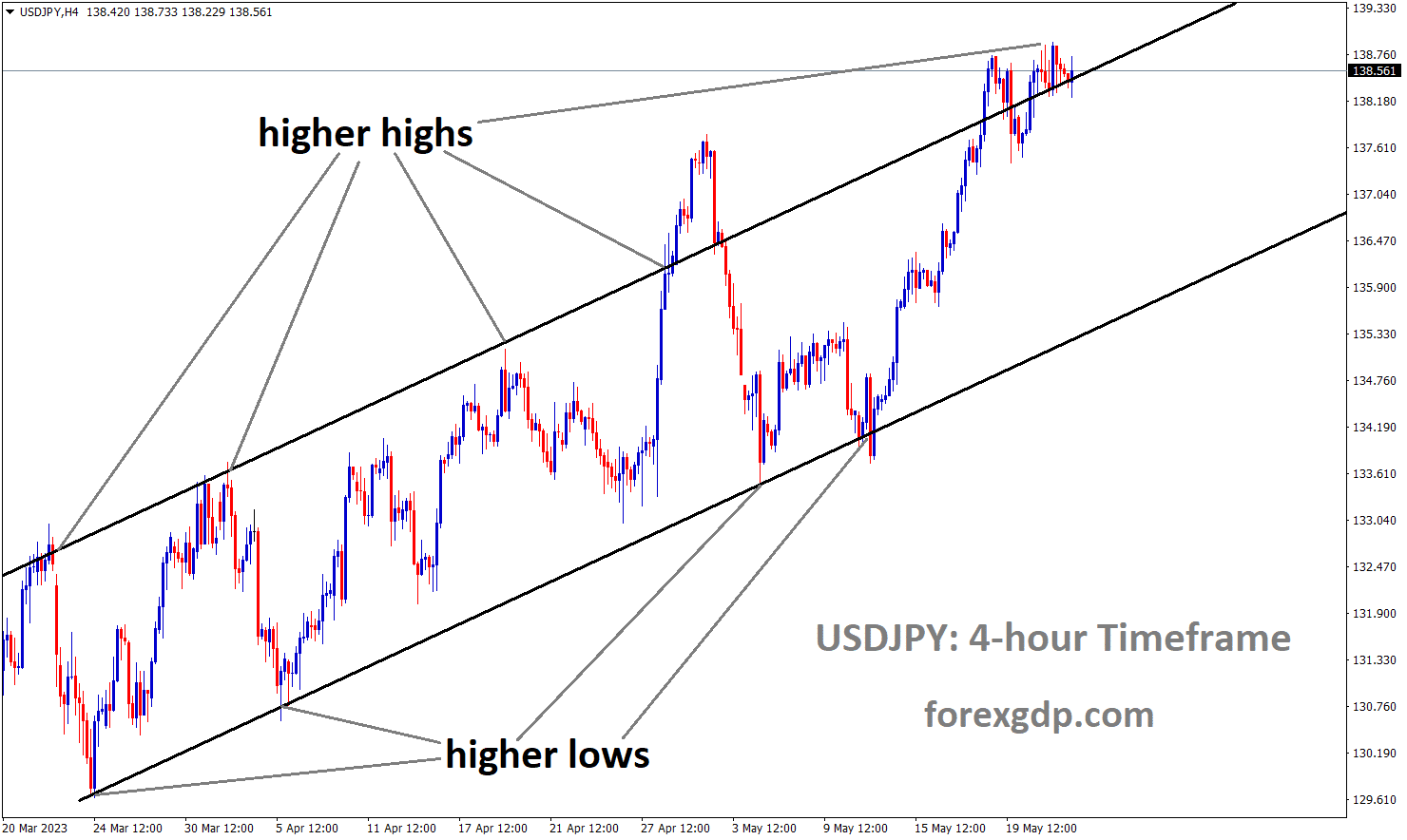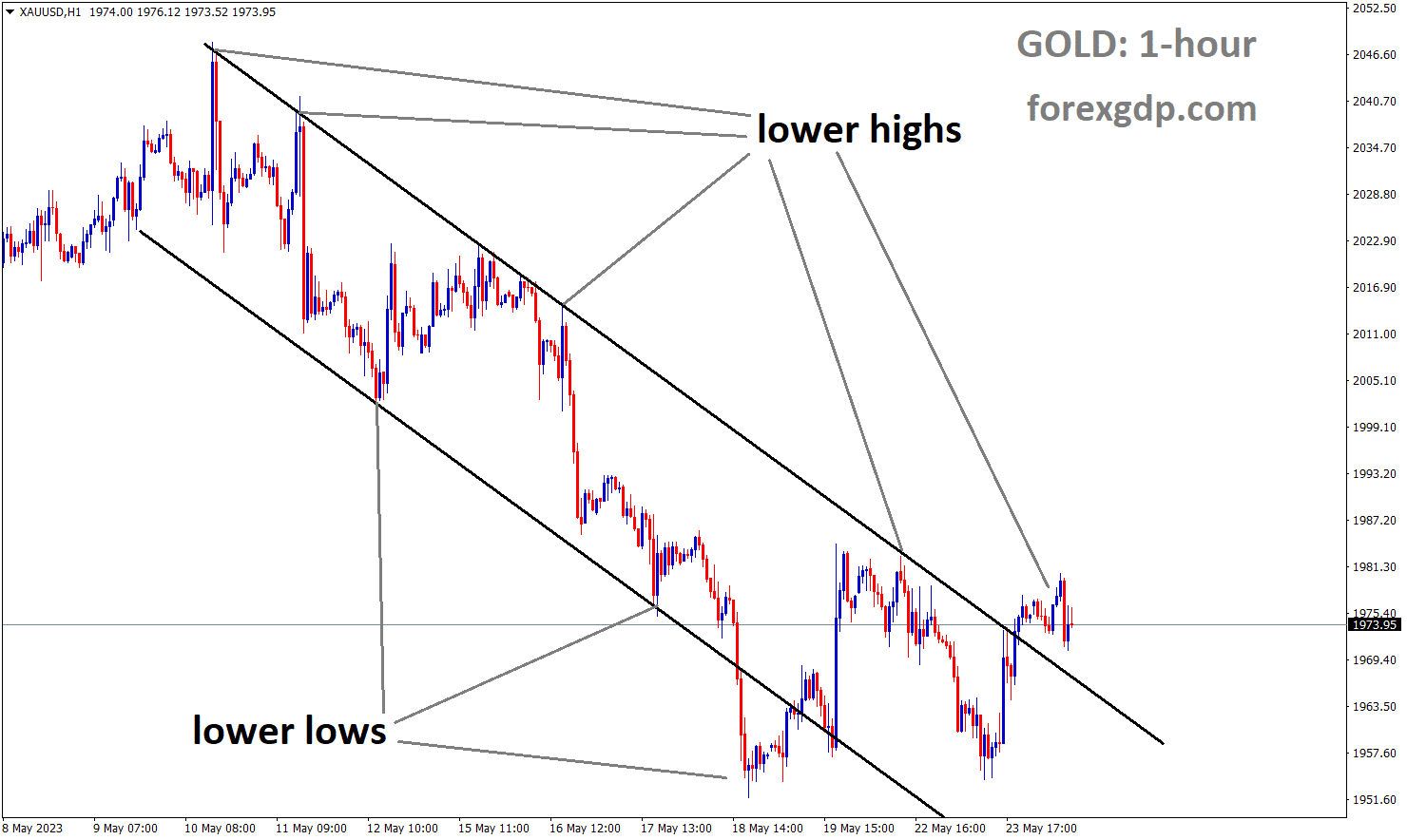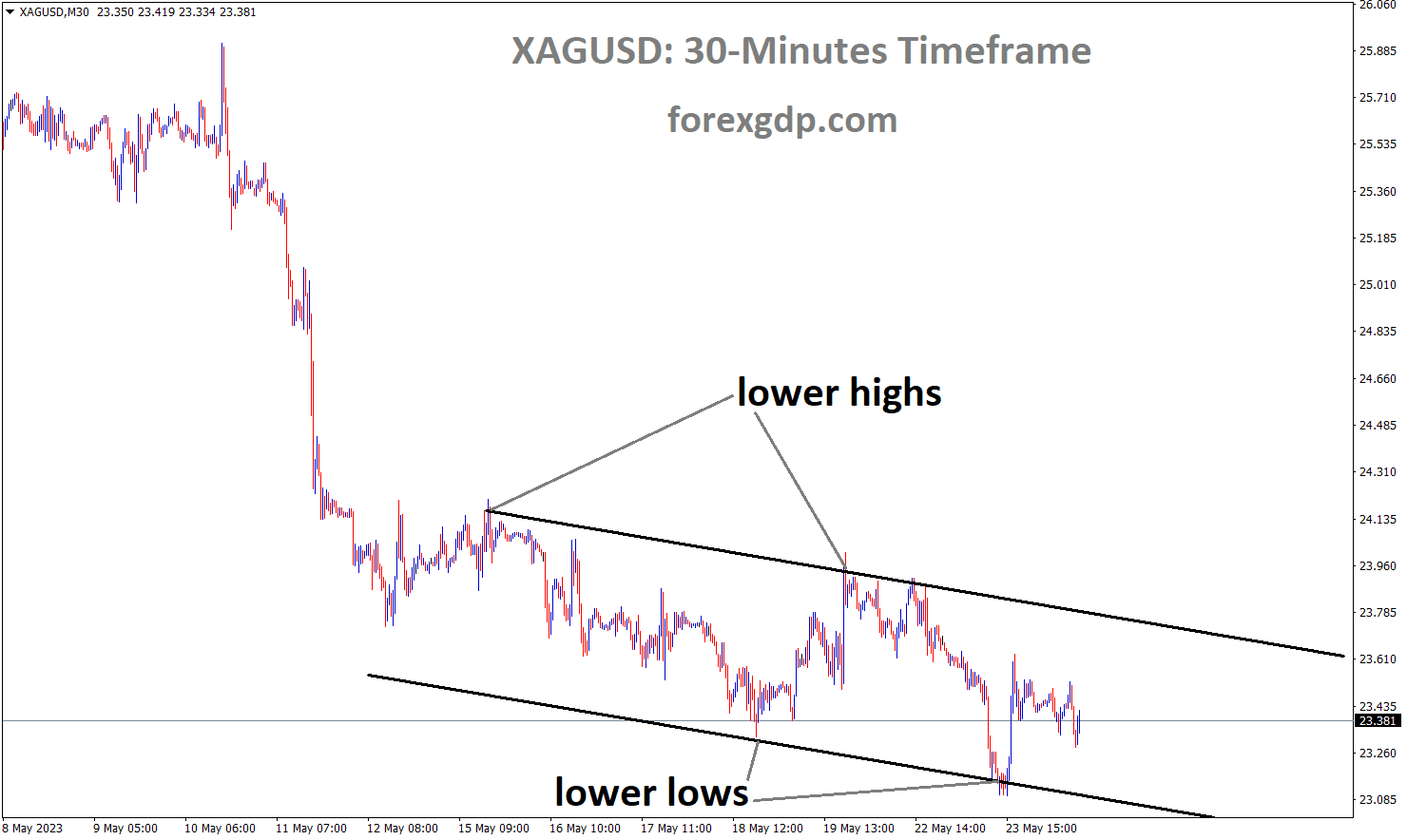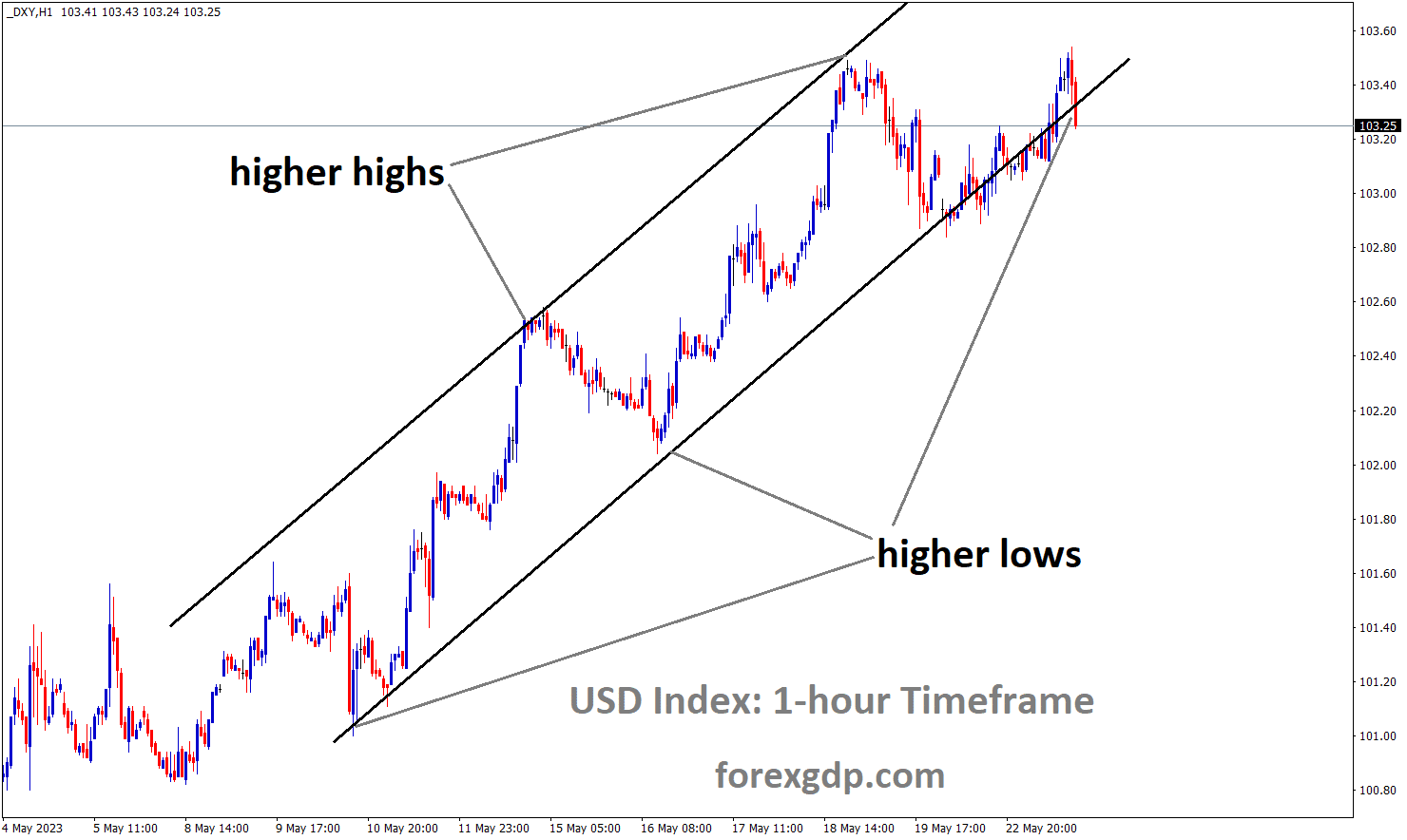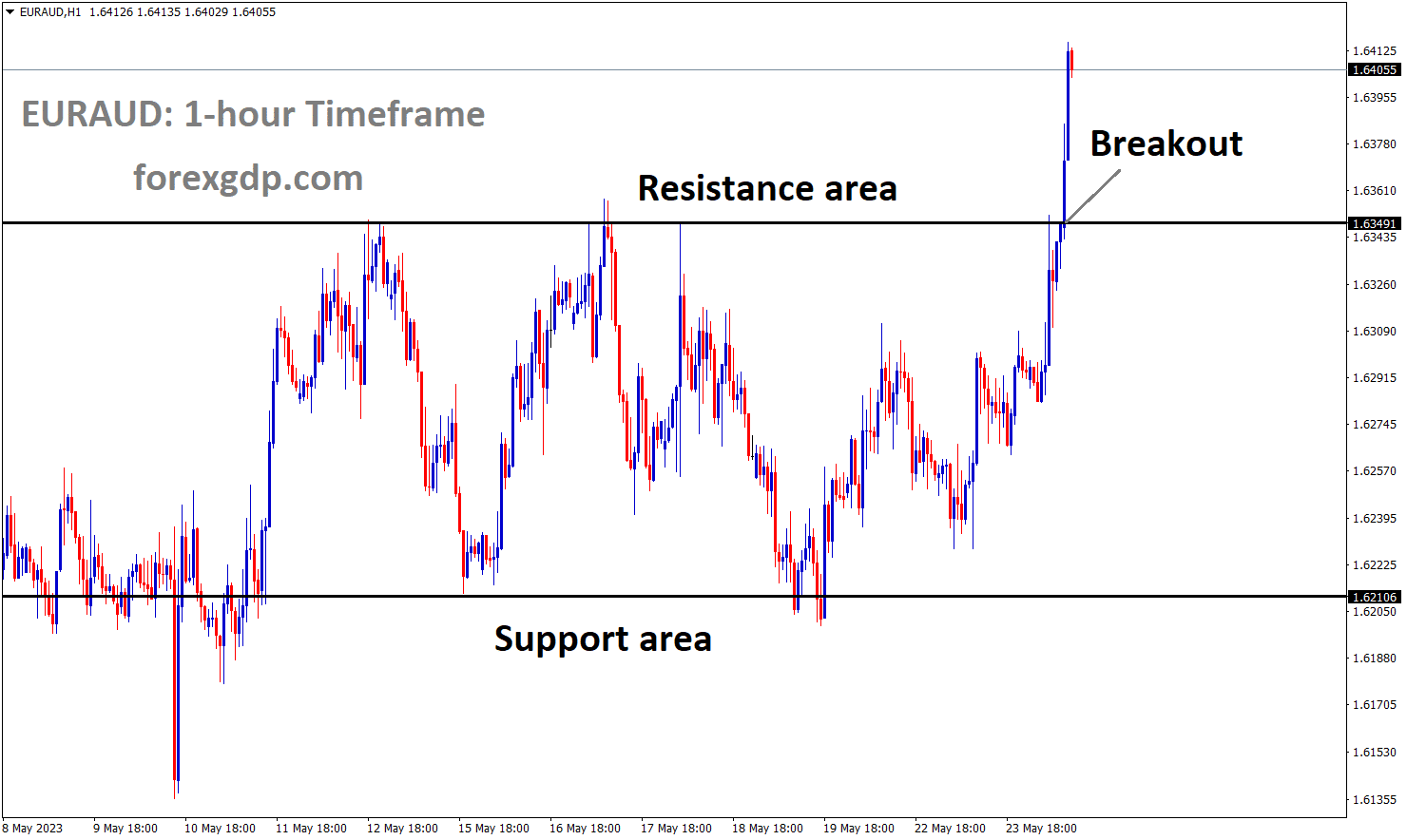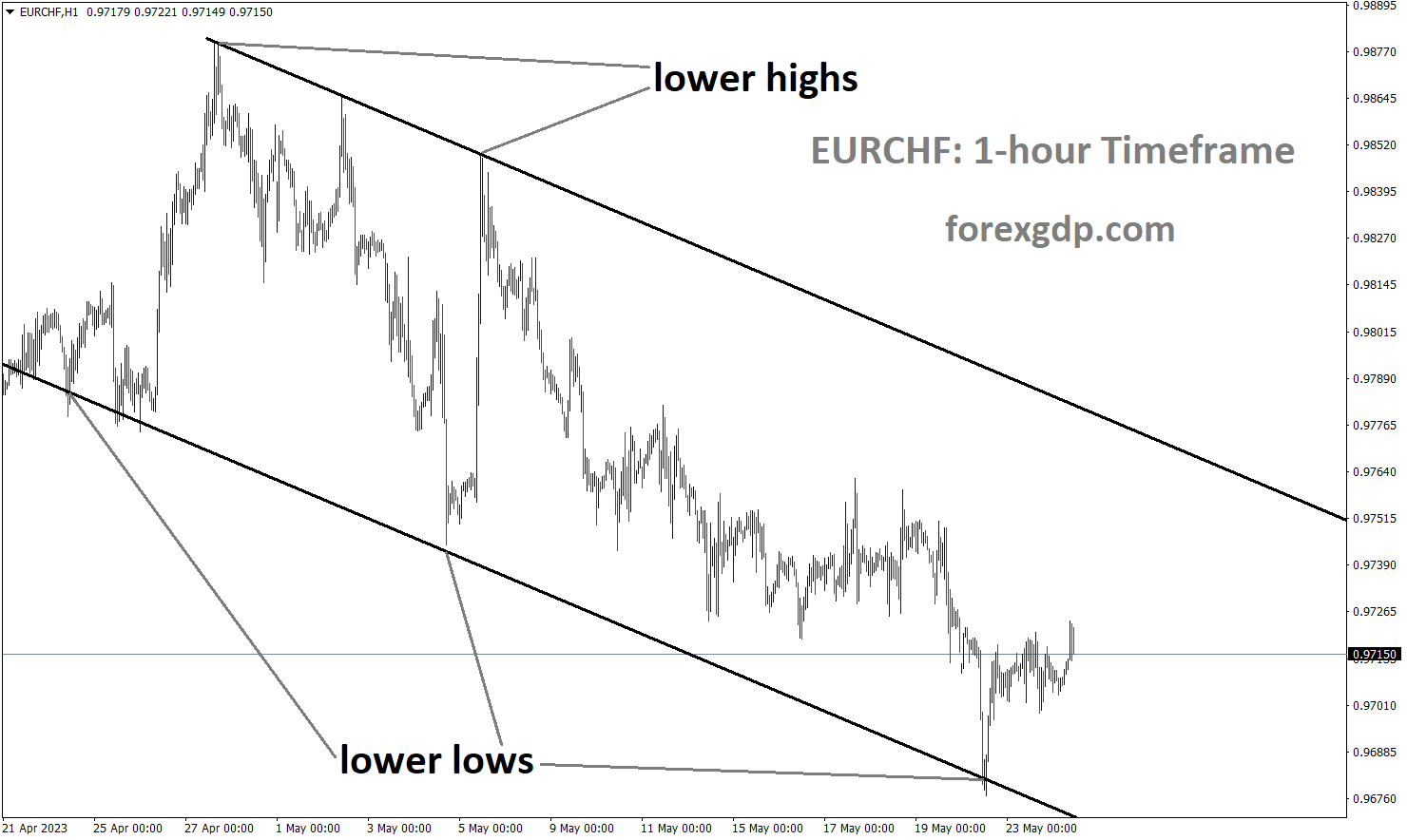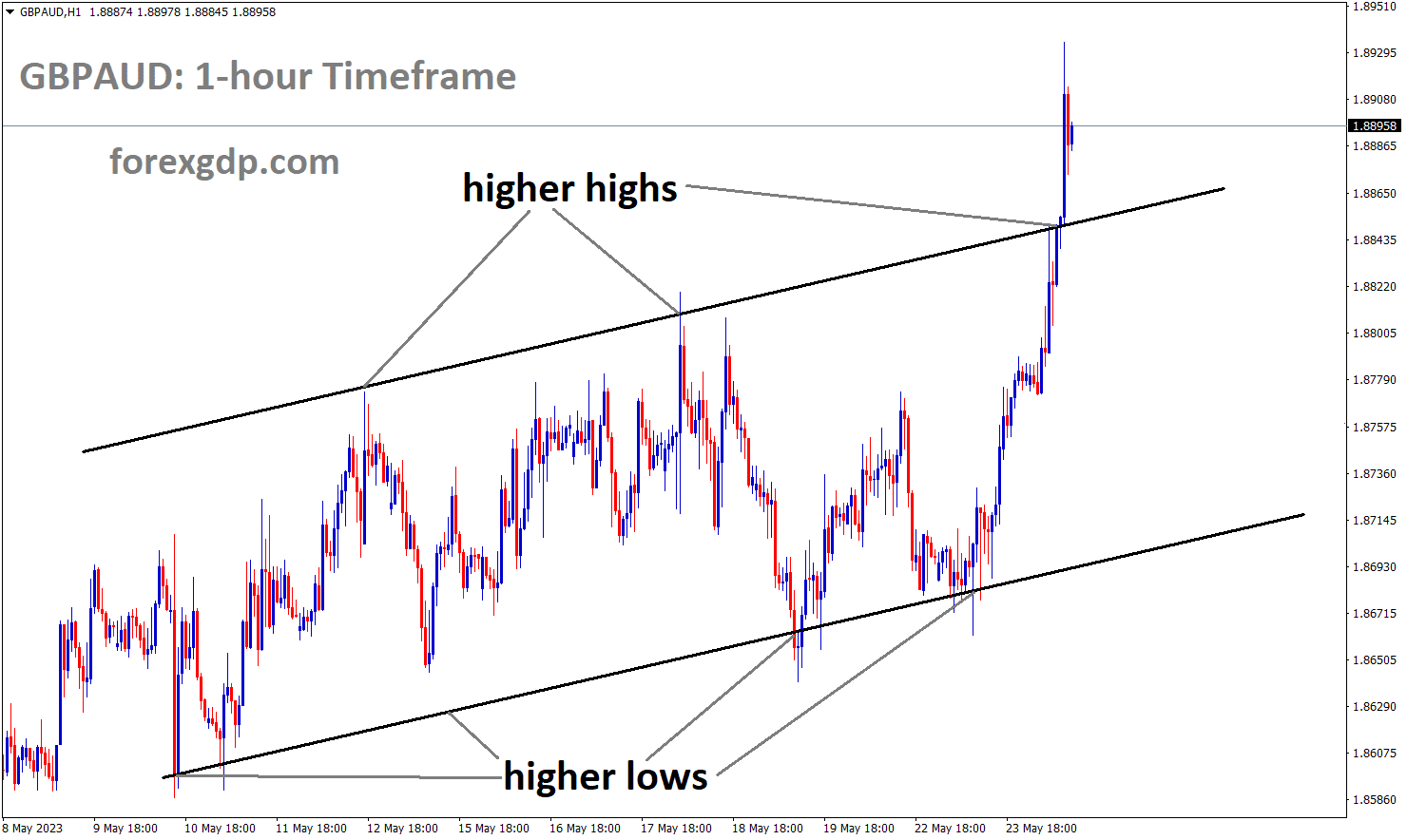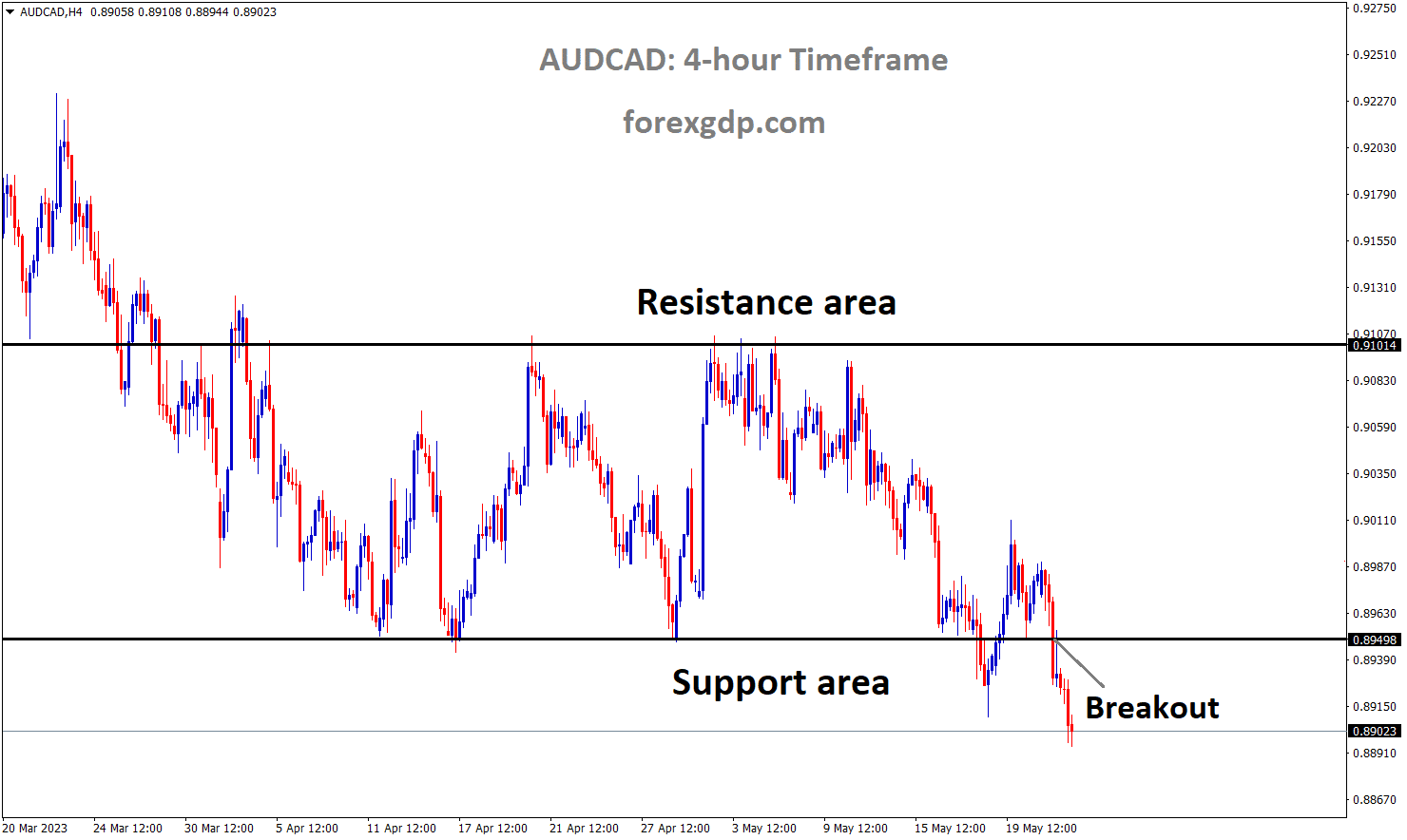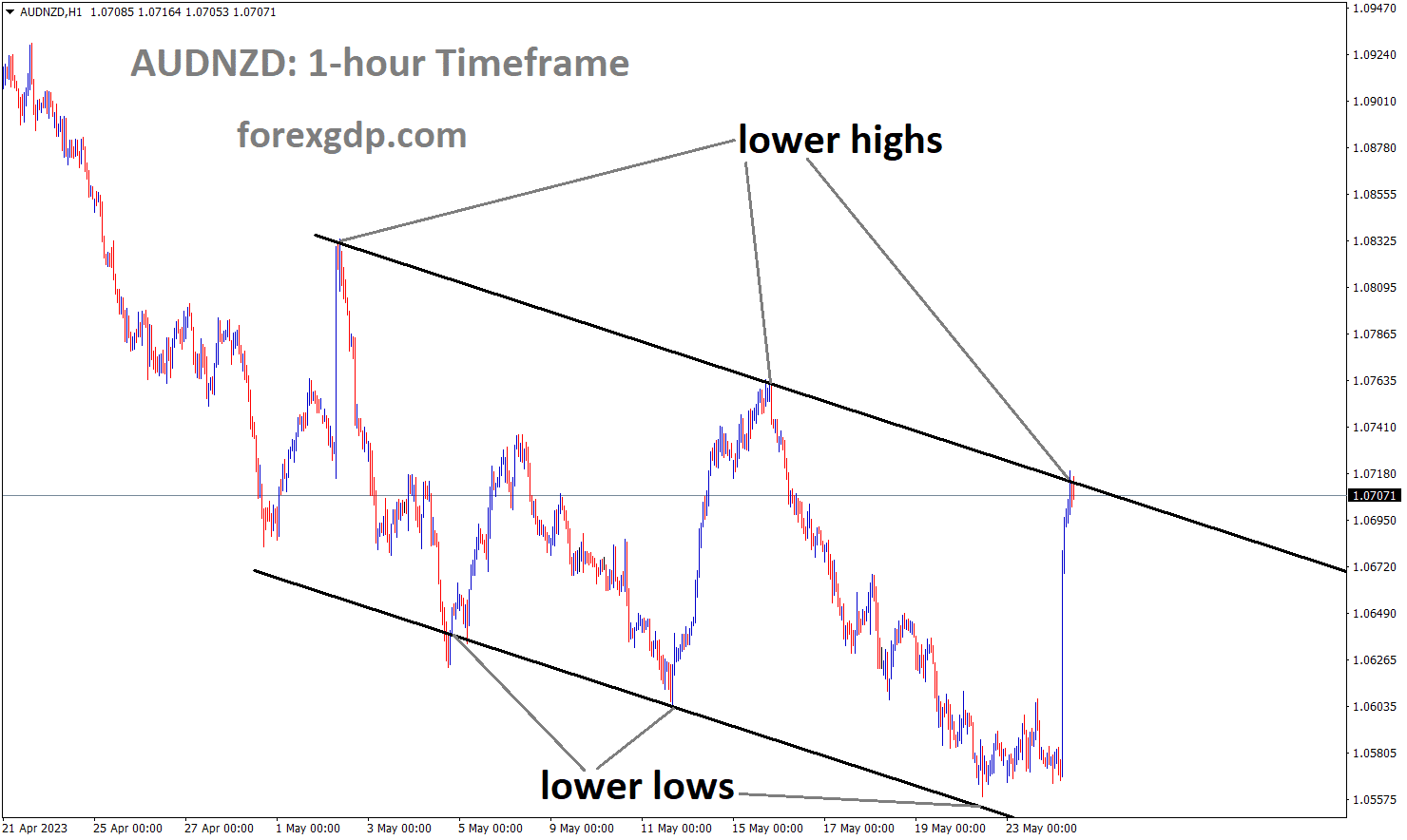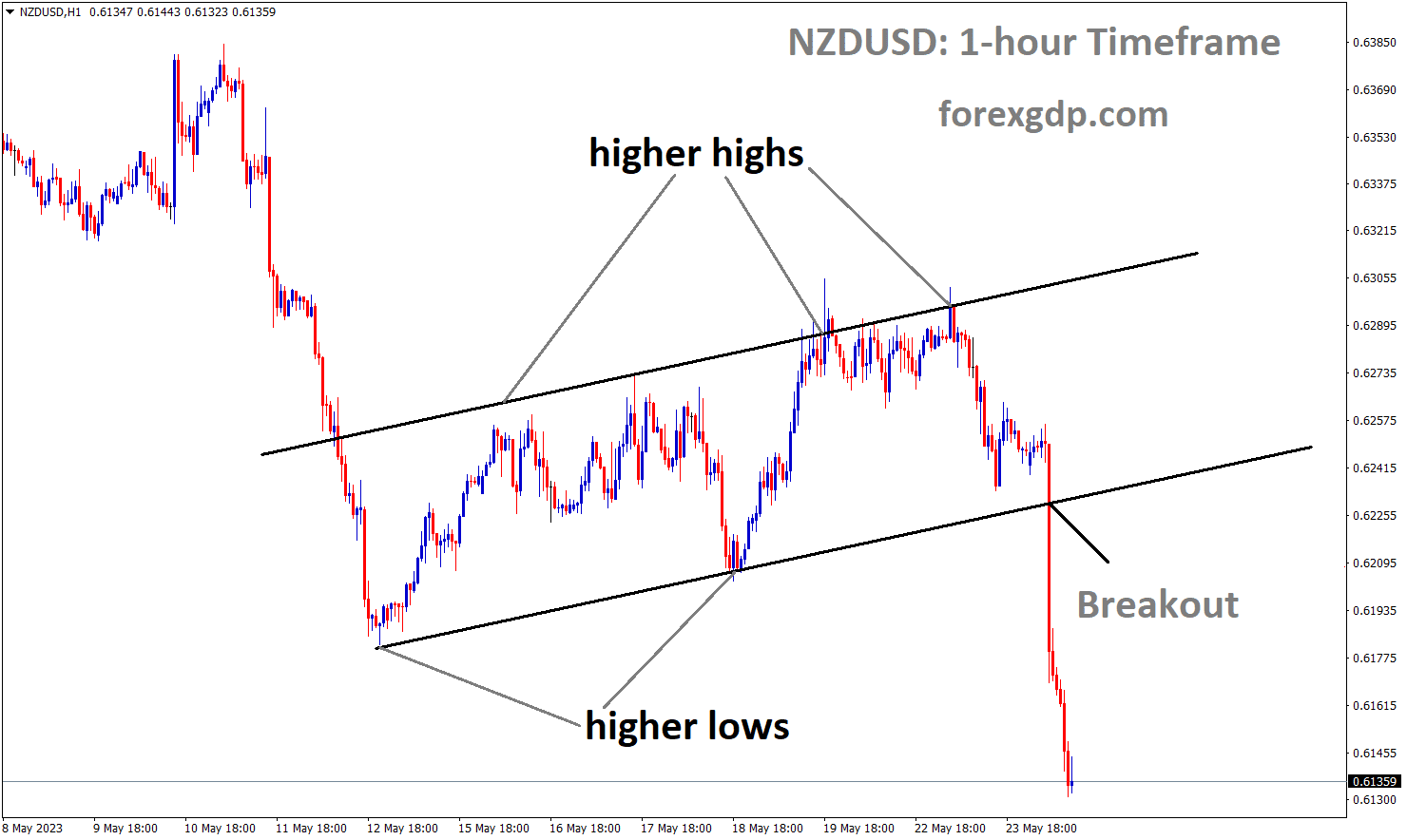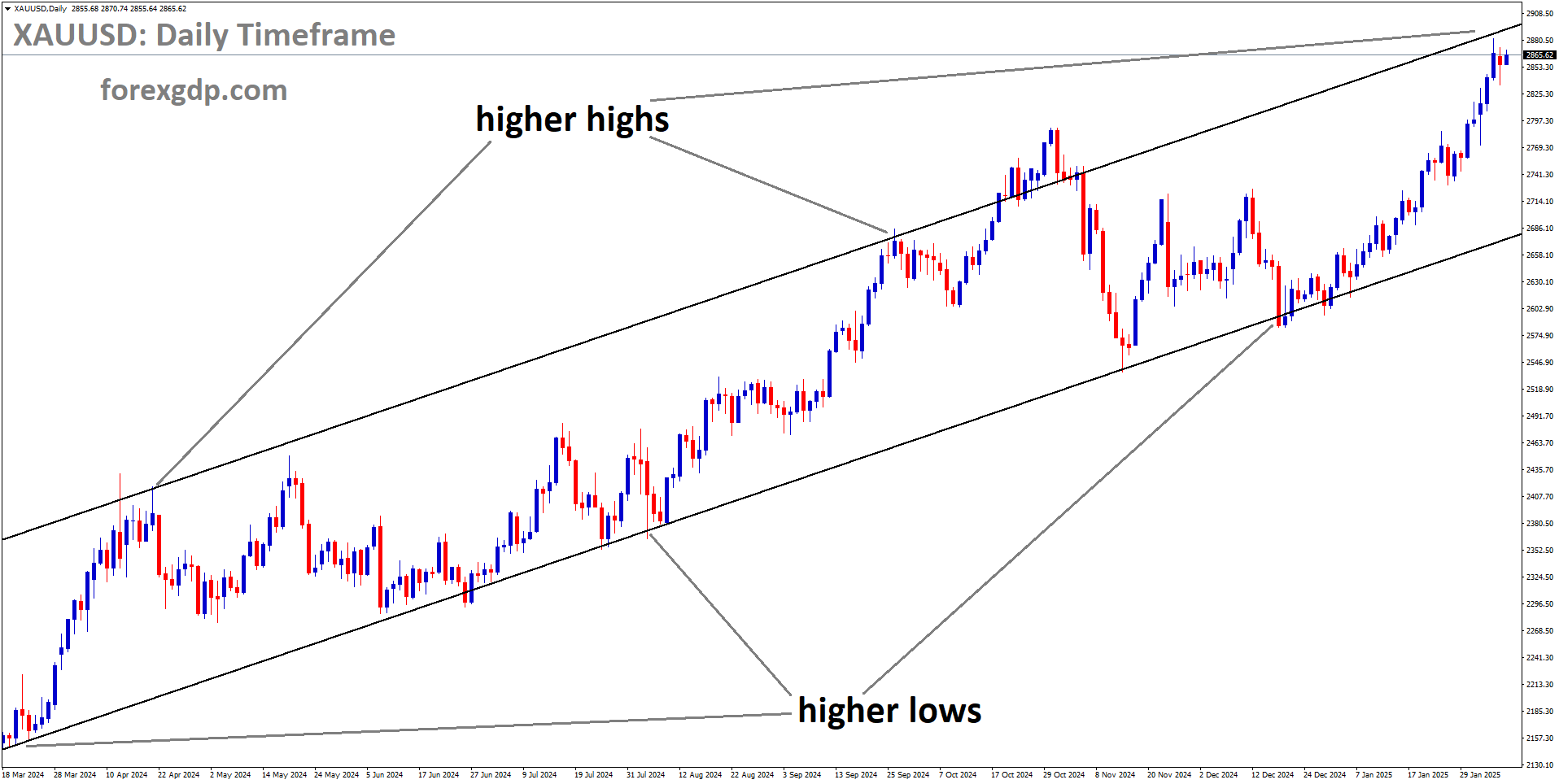USDJPY Analysis
USDJPY is moving in an Ascending channel and the market has reached the higher high area of the channel.
The Manufacturing PMI for Japan for the month of May increased to 50.8 from the predicted reading of 49.5 and the Services PMI increased to 56.3 from predicted values of 55.2. Large Japanese manufacturers’ business sentiment has changed for the first time this year, which is proof that the Japanese economy is recovering from Covidian-19.
Investors are uncertain about the direction of future FX activity, and the USD/PY pair is showing signs of a sharp decline in volatility near 138.60. The asset is struggling to make a decisive move in the absence of clarity because bipartisan agreement on US debt-ceiling issues cannot be reached. Early in Tokyo, S&P500 futures have seen some gains. On Tuesday, investors heavily sold US stocks because they believe that a recession would be brought on by the US economy’s failure to make its contractually required payments. Market sentiment has deteriorated due to market obscurity globally.After regaining the high above 103.60 from the previous week, the US Dollar Index is now in an inventory adjustment phase. As investors wait for the release of the minutes from the Federal Open Market Committee’s May meeting, it is challenging to think about further direction.
Investors ought not to do that. Jerome Powell, the head of the Federal Reserve (Fed), stated at the meeting in May that the central bank will be more dependent on data going forward after raising interest rates by 25 basis points (bps). Thursday, Fed Powell provided dovish interest rate guidance and backed a pause for the monetary policy meeting in June because the US regional banks’ strict credit standards are having a significant negative impact on inflationary pressures. Economic prospects for the Japanese Yen are improving due to rising wages and a rebound in demand generally. According to Reuters Tankan Survey For the first time this year, business sentiment at major Japanese manufacturers turned positive, and the service sector’s morale reached a five-month high, adding to the evidence that the economy is recovering from the COVID-driven recession. Additionally, the May Manufacturing PMI jumped to 50.8 vs. estimates of 49.5 and the May Services PMI soared to 56.3 vs. estimates of 55.2. These circumstances might enable Japan’s inflation to consistently stay above 2%.
GOLD Analysis
XAUUSD Gold price is moving in the Descending channel and the market has reached the lower high area of the channel.
Prior to the release of the FOMC meeting minutes today, gold prices are consolidating. The deadline for the US to enter default is June 1st, according to US Treasury Secretary Janet Yellen, but talks to raise the debt ceiling have not yielded any results.
SILVER Analysis
XAGUSD Silver Price is moving in the Descending channel and the market has rebounded from the lower low area of the channel.
Prior to Wednesday’s European session, the price of gold remains stable at $1,975. In doing so, the precious metal represents the market’s inaction amidst conflicting emotions and a cautious attitude prior to the important data or events. However, the Gold Price had previously cheered the US Dollar’s decline as the negotiations to fix the debt ceiling issue stalled. The most recent decline in US Treasury bond yields amid mixed but generally positive US PMI data is also likely to encourage those who favour the US dollar. It should be noted that the market sentiment is still negative in advance of the discussions about the US debt ceiling and the release of the minutes from the most recent Federal Open Market Committee monetary policy meeting.
USD Index Analysis
USD index is moving in an Ascending channel and the market has fallen from the higher high area of the channel.
Ahead of the FOMC meeting minutes scheduled for today, the US dollar moved in a positive direction. No agreement has been reached regarding the rising debt limit, according to White House speaker Kevin McCarthy, who added that this week’s negotiations will continue in additional meetings. In the event that the White House does not approve the US Debt Raising Limit, June 1 is the deadline for US Default.
As traders wait for the most recent Federal Open Market Committee Meeting Minutes, the bulls of the US Dollar Index take a breather at a nine-week high, moving to 103.50. Fears of a US default are another factor that makes the greenback’s index against six major currencies difficult to read. However, the DXY price was restrained early on Wednesday by hawkish Federal Reserve concerns and positive US data. Market sentiment has recently been affected by a lack of progress in the negotiations to prevent the US debt ceiling expiration and worries that the US may mark the catastrophic default. US House Speaker Kevin McCarthy recently broke the rules by telling Reuters that there would not be a deal on the debt ceiling extension today but that they would reach one before June 1. Washington previously released news stating that the US Treasury had asked several agencies if they could postpone the payment demands.Speaking of the data, the May monthly PMIs’ preliminary results showed that the US services sector continues to outperform the manufacturing sector, driving the Composite PMI figure to its highest levels in a year. However, compared to market expectations of 50.0, the US S&P Global Manufacturing PMI dipped to 48.5 from 50.2 while the Services PMI increased to 55.1 from 52.6. As a result, the Composite PMI registered 54.5 points as opposed to the analysts’ predictions of 50.0 and 53.4.
The recent remarks from Richmond Fed President Thomas Barkin, San Francisco President Mary C. Daly, and Atlanta Fed President Raphael Bostic, who supported the calls for higher Fed rates while citing the inflation problems, however, drove bets on the Fed rate increase in June. The same factor delays the Fed’s rate reduction and permits the US Dollar to hold its ground despite a decline in US Treasury bond yields. It is important to note that the US 10-year and 2-year Treasury bond yields dropped the day before from their highest levels since early March. With this, the Wall Street benchmarks saw losses, but the S&P 500 Futures, which have recently marked modest gains, appear to be struggling to find a direction. Looking ahead, the main drivers of short-term US Dollar Index movements prior to the Fed Minutes are the qualitative market sentiment-influencing factors, such as US debt ceiling negotiations, US-China tension, and Fed commentary.
EURAUD Analysis
EURAUD has broken the Box pattern in upside.
The release of mixed preliminary May PMI data on Tuesday, the Euro continued to deliver a power-pack action. Manufacturing PMI dropped from estimates of 46.2 and the previous release of 45.8 to 44.6. A number below 50.0 indicates a decline in manufacturing activity. While the Services PMI increased to 55.9 from the consensus estimate of 55.6, it still lagged behind the previous release of 56.2. The second half of the year is expected to see a slight decline in real GDP, according to Commerzbank analysts. Christine Lagarde, president of the European Central Bank (ECB), will deliver a speech on Wednesday, and it will be closely watched. Continental European Bank Lagarde is anticipated to provide some clarification on June’s monetary policy because she already stated that multiple interest rate increases are necessary to combat the Eurozone’s persistent inflation.
EURCHF Analysis
EURCHF is moving in the Descending channel and the market has rebounded from the lower low area of the channel.
The Swiss Government and UBS Group have been negotiating a loss protection agreement for the purchase of Credit Suisse Bank. According to a filing, UBS Group also discussed prudential capital requirements, risk-weighted assets, and liquidity measures with the FINMA regulatory body.
UBS Group AG stated in a regulatory filing that it has been in active talks with the Swiss government and its representatives to come to an agreement on specific terms and negotiate a binding loss protection agreement pertaining to its deal to acquire Credit Suisse. Regarding adjustments to and transitional measures for specific prudential capital requirements, risk weighted assets measures, and other capital and liquidity requirements for the combined firm, UBS Group AG is in discussions with FINMA, the bank stated in the filing.
GBPAUD Analysis
GBPAUD is moving in an Ascending channel and the market has reached the higher high area of the channel.
Since 1992, the UK Core Inflation Rate has increased to a 30-year high of 6.8%, while the MoM Inflation Rate has decreased from 10.1% to 8.7%. In order to keep inflation within the desired range of 1-2%, the Bank of England will likely increase rates by another 25 basis points at its upcoming meeting.
The UK CPI report beat expectations by a wide margin, which led to a rise in the value of the pound this morning. The biggest shock came from core inflation, which has now risen to a level not seen since 1992! This almost ensures that the Bank of England will maintain its 25 bps interest rate at their upcoming meeting. Despite this, there is some good news because the PPI metric has significantly decreased. Despite exceeding expectations, headline inflation did drop sharply; however, in my opinion, this is insufficient to prevent another hike.
After Governor Andrew Bailey’s remarks yesterday about the need to combat persistently high inflationary pressures, money market pricing has been hawkishly revised. Today’s data may confirm the central bank’s decision to maintain its aggressive monetary policy. Rate expectations are now projected to be almost 60 basis points at year’s end, and Governor Bailey’s speech later today is probably going to be a little bit more hawkish than it was yesterday. Another important factor for cable is how long the US debt ceiling talks last, as the longer they go on, the more uneasy the markets get.
AUDCAD Analysis
AUDCAD has broken the Box pattern in downside.
Oil prices are consolidating as more people wait with increasing anxiety for the US debt ceiling limit to rise. Minutes of today’s FOMC meeting, FED Due to a liquidity crisis in banks and recent domestic data, Powell may be pausing rates in June. Business has performed better than expected.
This week’s movements in the Canadian dollar are primarily driven by US data only because there has been little major Canadian news.
The price of crude oil has increased by over 1% amid expectations that US fuel demand will increase and supply disruptions in Canada brought on by wildfires in the oil-rich province of Alberta. The commodity-linked Loonie is supported by this
Market expectations that the US central bank will maintain higher interest rates for longer have increased as a result of the hawkish comments made by a number of influential Federal Reserve officials overnight. This keeps the yields on US Treasury bonds high and helps the US dollar. It also raises hopes that US politicians will reach a debt ceiling agreement. In addition, concerns about slowing global growth, particularly in China. Market participants are now anticipating the US economic docket, which will include the Richmond Manufacturing Index, New Home Sales data, and the flash PMI prints. In order to seize short-term opportunities, traders will also take cues from the dynamics of the oil price. However, before making directional bets, exercise some caution given the previously mentioned mixed fundamental backdrop and the recent range-bound price action seen over the past week or so.
AUDNZD Analysis
AUDNZD is moving in the Descending channel and the market has reached the lower high area of the channel.
A slowing global growth, particularly in China, help the safe-haven dollar. It is important to remember that data released by China last week revealed that the second-largest economy in the world underperformed in April. The Reserve Bank of Australia might hold off on raising interest rates in June. Traders are now focusing on the US economic docket, which includes the Richmond Manufacturing Index, New Home Sales data, and the flash PMI prints. The debt ceiling discussions and this could affect the USD and create short-term trading opportunities around the major.
NZDUSD Analysis
NZDUSD has broken the Ascending channel in downside.
The RBNZ increased its interest rate by 25 basis points today, to 5.50% from 5.25%. Compared to the 50bps rate increase from last month, this rate increase is less significant. Although inflation has decreased from 7.3% to 6.7%, it will still need to rise in the remaining months of the year in order to reach the target of 1-2%. Benefits of rate hike paths in New Zealand’s monetary policy include the easing of the labour market, rising wage price growth, and decreasing retail sales.
The Reserve Bank of New Zealand , which raised its benchmark rate by 25 basis points in line with expectations but gave a hint that it might be finished tightening, caused a decline in the value of the New Zealand dollar.The New Zealand central bank increased the cash rate by 25 basis points to 5.5%, which was less than the 50 bps increase made in April as a result of ongoing price pressures. Since April, consensus NZ economic growth expectations have been sharply downgraded for this year, and macroeconomic data have been underwhelming recently. As a result, the pace of tightening has slowed.
Since inflation has moderated from a three-decade high of 7.3% to 6.7% but is still significantly above the RBNZ’s target range of 1%-3% and the job market, including wage growth, is still strong, some in the market had predicted that rates would peak at 5.75% at the end of the cycle.The RBNZ’s admission that rates are at their highest level, however, has hurt the NZD. Given the slow progress being made in Washington to raise the debt ceiling for the US government and the lowering of expectations for a Fed rate cut this year following hawkish comments from several Fed officials, risk sentiment has been on the back burner. The first rate cut has been delayed from mid-2023 to the end of the year by the money markets, who anticipate the Fed to hold rates steady at its upcoming meeting in June.
Don’t trade all the time, trade forex only at the confirmed trade setups.
Get Live Free Signals now: forexgdp.com/forex-signals/

